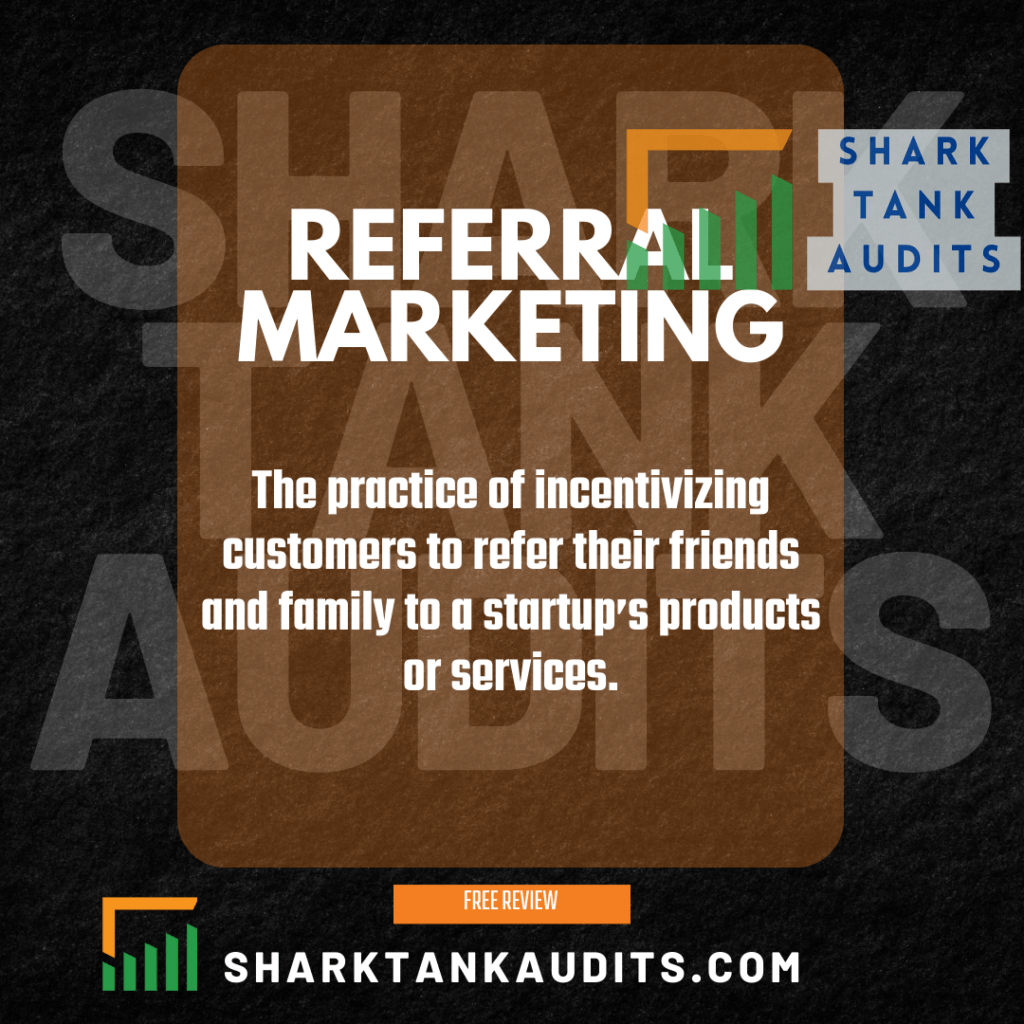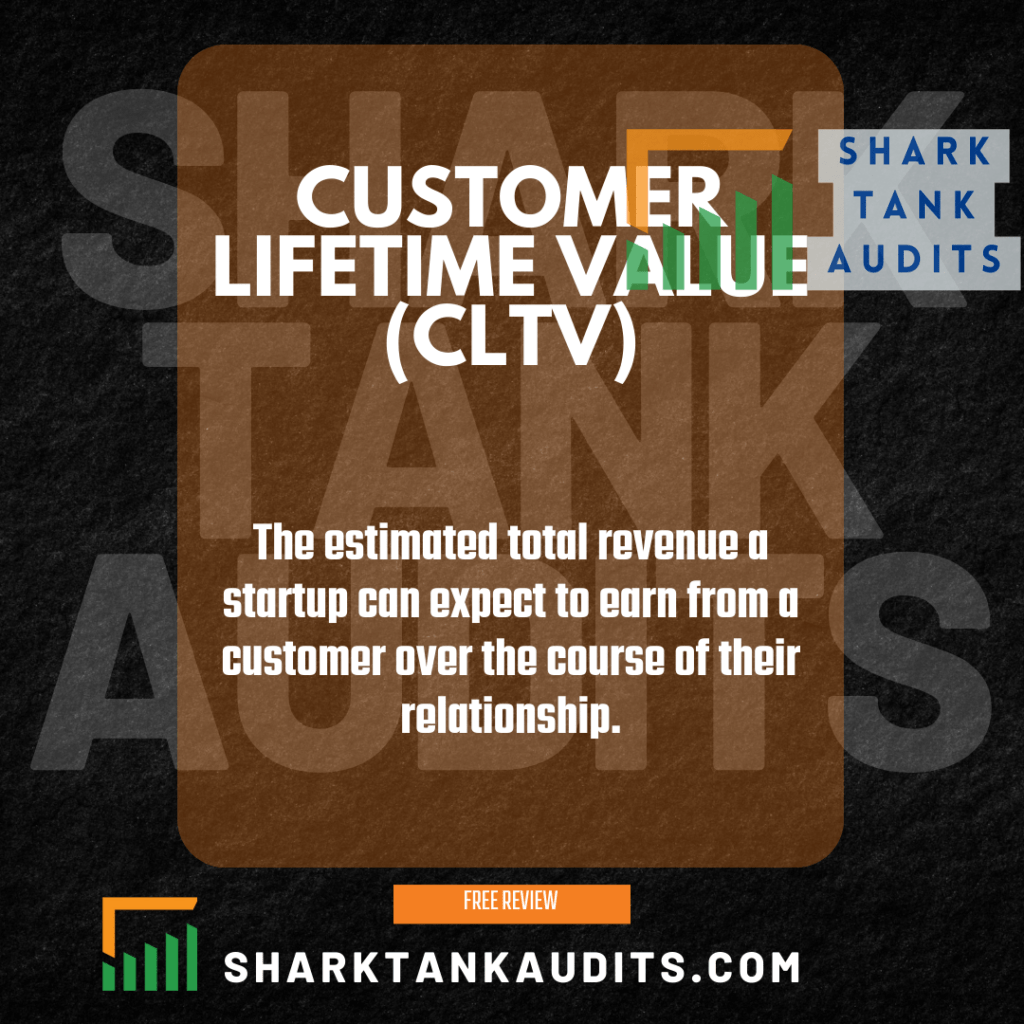Here are 49 Shark Tank Marketing Terms for Startups.

- Target Market: The specific group of customers that a startup is trying to reach with its products or services.

- Customer Persona: A fictional representation of a startup’s ideal customer based on research and data.

- Customer Acquisition Cost (CAC): The cost of acquiring a new customer, including marketing and sales expenses.

- Conversion Rate: The percentage of website visitors who take a desired action, such as making a purchase or signing up for a newsletter.

- Churn Rate: The rate at which customers stop using a startup’s products or services.

- Brand Identity: The visual and verbal elements that communicate a startup’s brand, such as logos, colors, and messaging.

- Brand Positioning: The way a startup’s brand is perceived in the marketplace relative to its competitors.

- Unique Selling Proposition (USP): The unique benefit that a startup’s product or service provides to customers.

- Call-to-Action (CTA): A prompt for website visitors to take a specific action, such as “sign up” or “buy now”.

- Search Engine Optimization (SEO): The practice of optimizing a website to improve its ranking in search engine results.

- Pay-Per-Click (PPC) Advertising: A form of online advertising in which advertisers pay each time a user clicks on one of their ads.

- Social Media Marketing: The use of social media platforms to promote a startup’s products or services.

- Influencer Marketing: The use of influencers, such as celebrities or social media personalities, to promote a startup’s products or services.

- Email Marketing: The use of email to promote a startup’s products or services to customers and prospects.

- Content Marketing: The creation and distribution of valuable content, such as blog posts, videos, and infographics, to attract and retain customers.

- Referral Marketing: The practice of incentivizing customers to refer their friends and family to a startup’s products or services.

- Viral Marketing: The use of social media, email, or other channels to create buzz and encourage users to share a startup’s content with their networks.

- Public Relations (PR): The practice of managing a startup’s reputation in the media and with the public.

- Customer Retention: The practice of keeping existing customers engaged and satisfied to reduce churn and increase revenue.

- Marketing Funnel: The journey that a customer takes from initial awareness of a startup’s brand to making a purchase, including stages such as consideration, evaluation, and purchase.

- A/B Testing: The practice of testing different versions of a website, email, or ad to determine which one performs better.

- Landing Page: A standalone web page designed to persuade visitors to take a specific action, such as making a purchase or filling out a form.

- Customer Lifetime Value (CLTV): The estimated total revenue a startup can expect to earn from a customer throughout their relationship.

- Retargeting: The practice of targeting ads to users who have previously interacted with a startup’s website or products.

- Growth Hacking: The practice of rapidly experimenting with marketing strategies to identify the most effective ones for driving growth.

- Freemium Model: A pricing model in which a startup offers a basic version of its product or service for free, with the option to upgrade to a paid version with additional features.

- User-generated Content (UGC): Content created by users of a startup’s product or service, such as reviews, testimonials, and social media posts.

- Content Management System (CMS): A software platform for creating and managing digital content, such as websites and blogs.

- Social Proof: The concept that people are more likely to make a purchase or take an action if they see others doing the same thing.

- Customer Feedback: The input and opinions that customers provide about a startup’s products, services, and overall customer experience.

- Customer Journey: The path that a customer takes from first encountering a startup’s brand to becoming a loyal customer.

- Brand Awareness: The level of recognition and familiarity that consumers have with a startup’s brand.

- Publicity: The exposure and attention that a startup’s brand receives through media coverage and other forms of promotion.

- Organic Traffic: The visitors that a website receives from search engines and other sources without paid advertising.

- Paid Traffic: The visitors that a website receives from paid advertising, such as PPC ads.

- Influencer: A person with a large following on social media who can influence their followers’ purchasing decisions.

- Customer Segmentation: The practice of dividing a startup’s customers into groups based on shared characteristics or behaviors.

- Brand Voice: The tone, personality, and style of a startup’s communication with customers.

- Marketing Automation: The use of software to automate repetitive marketing tasks, such as email campaigns and social media posts.

- Sales Funnel: The process of guiding potential customers through the steps of making a purchase, from initial awareness to closing the sale.

- KPIs (Key Performance Indicators): Metrics used to measure the success of a startup’s marketing efforts, such as website traffic, conversion rates, and customer lifetime value.

- Unique Value Proposition (UVP): The unique and compelling value that a startup offers to its customers.

- Conversion Rate Optimization (CRO): The practice of optimizing a website or landing page to increase the percentage of visitors who take a desired action.

- Click-Through Rate (CTR): The percentage of people who click on a link in an advertisement or email.

- Cost Per Acquisition (CPA): The cost a startup pays to acquire a new customer through marketing efforts.

- Cost Per Click (CPC): The cost a startup pays each time someone clicks on one of its ads.

- Customer Acquisition Cost (CAC): The average cost a startup pays to acquire a new customer, including marketing and sales expenses.

- Marketing Mix: The combination of product, price, promotion, and place that a startup uses to reach and influence customers.

- Customer Relationship Management (CRM): The practice of managing interactions with customers and potential customers through a database or software.






Entrepreneurship is the driving force behind innovation, economic growth, and societal progress. It embodies the spirit of individuals who dare to dream, create, and take calculated risks to bring their visions to life.